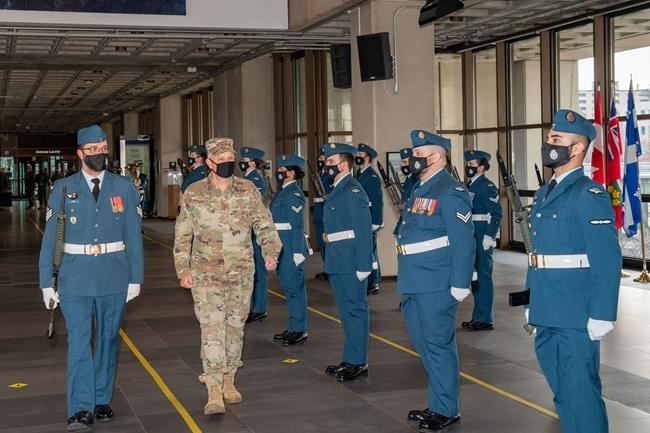OTTAWA — The commander of the North American Aerospace Defence Command says China and Russia are developing new ways to attack the continent as he waits for political direction to modernize Norad's outdated early-warning system.
U.S. Gen. Glen VanHerck made the comment to reporters Tuesday during his first visit to Ottawa since taking over in August 2020 as commander of Norad, the joint American-Canadian command responsible for continental defence.
VanHerck’s visit coincided with growing concerns about the development and deployment of long-range cruise missiles and so-called hypersonic weapons by Russia and China that are capable of striking North America.
Military officials have been warning for years that the string of 1980s-era radars responsible for detecting an attack on North America is unable to detect such modern threats, a message VanHerck says he repeated to Canadian officials while in Ottawa.
“The North Warning System is designed for a threat from 50 years ago,” VanHerck said. “A bomber that has to fly over the North Pole to drop gravity weapons, has to fly over Canada and North America into the United States to drop any of those weapons.”
Canada and the U.S. have committed for years to upgrade the entire system, with Prime Minister Justin Trudeau and U.S. President Joe Biden most recently issuing a joint statement to that effect on the eve of the federal election this past August.
Yet those efforts are still very much in their infancy, VanHerck said, adding he is hoping for direction soon from Defence Minister Anita Anand and her American counterpart, Defense Secretary Lloyd Austin, so work on meeting those threats can begin in earnest.
“North America is only going to become more vulnerable to future capabilities being developed by potential adversaries,” he said. “And decisions need to be made in the not-too-distant future. So I’d love to see those happen sooner than later.”
Some military officials have previously grumbled about what they see as a lack of urgency from Ottawa and Washington when it comes to upgrading North America’s defences, but VanHerck said the "time is right" for movement on the issue.
"There's a great opportunity to have those discussions while the U.S. is in the middle of developing our current president's budget ... and you have a new administration in, new leadership," he said. "The time is right. But I don't have a timeline for that."
There have been questions about how much the entire effort will cost. Most experts predict the price tag will be in the billions, with Canada on the hook for 40 per cent of the total.
VanHerck admitted to having some preliminary cost estimates, but would not reveal any numbers until a decision is made on a specific modernization plan.
Political direction is needed to establish a framework in which each country will lay out its requirements and boundaries for a new system, such as whether the new system will include actual defensive measures to intercept incoming attacks.
Such discussions have previously carried significant political sensitivity, notably when Canada opted in 2005 not to join the U.S. in developing and deploying a ballistic-missile defence system.
VanHerck said his discussions in Ottawa with Anand, chief of the defence staff Gen. Wayne Eyre and other Canadian officials did not revolve around specific policy decisions, but were intended for him to update them on the current threat environment.
Much of the attention in recent weeks and months has focused on China’s rapidly growing military might, which includes dizzying technological advances that have included reports of a nuclear-capable hypersonic missile test in August.
The concern is such weapons are extremely difficult to detect and intercept because of the way they are launched and can manoeuvre, and leave military and political decisionmakers little time to react because of their speed.
Yet VanHerck noted China has yet to actually field hypersonic weapons while Russia has had them in its arsenal for years. To that end, he said, “Russia’s the primary military threat to North America. China’s about a decade behind.”
While Ottawa and Washington have yet to provide specific directions on what the next iteration of Norad should look like, VanHerck said his priority is to build a system that will provide military and political officials time to detect a threat and decide the appropriate response.
That will involve collecting data and intelligence from numerous sources not only in North America but around the world, and using artificial intelligence and other automated systems to analyze it faster, though he insisted people will still be in charge.
"I'm not talking about machines making decisions," he said. "Humans are still making decisions."
This report by The Canadian Press was first published Nov. 30, 2021.
Lee Berthiaume, The Canadian Press



